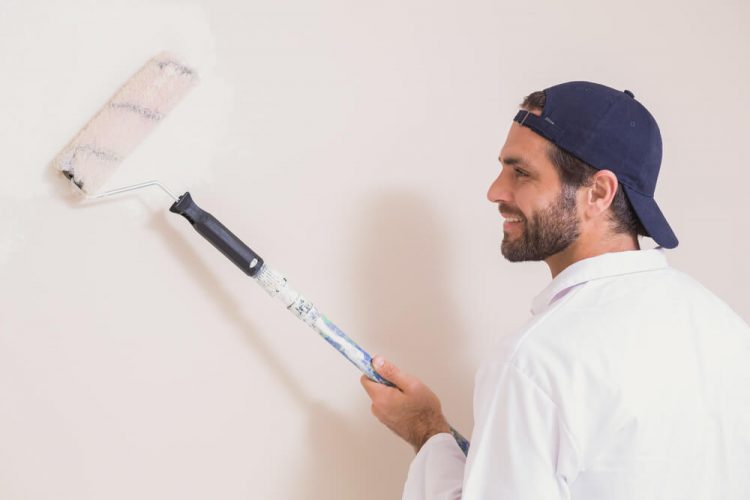Finally, you are finished applying the new concrete render on your exterior walls. It looks great and you are proud of what you did and accomplished. You went to bed early, eager to wake up the next day so that you can paint your walls to perfection.
However, upon waking up, you noticed that your newly rendered wall is still wet and is not ready to be painted yet. You grunt in frustration and wonder how long it will take before you can paint your new render walls. Freshly rendered walls need ample amount of time to dry properly before you can move on to the painting stage explains experienced renderers in Kings Langley (http://dvhrendering.co.uk/).
When Can You Paint New Render Walls?
Unfortunately, it takes some time before you can paint your new render walls properly. Most people think that water is used in the render mixture simply to mix the cement, but in reality, adding water to the mixture is critical in forming a chemical reaction called “hydration.”
Based on the information provided by ScienceDirect, hydration is the resulting chemical reaction when cement and water are mixed. This chemical reaction is important because it causes the render mixture to appropriately bind with the mortar, making it more durable and strong.
It is important to remember that the water added on the render mixture needs to fully evaporate first before you can paint over it. Painting over wet rendered walls will either trap the water inside the mortar causing your paint to crack in time or force the water to dissipate out of the newly rendered walls causing it to produce bubbles on the surface of the walls.
In reality, the formation of the concrete render takes time. You need to wait for about 28 days or more to make sure that your new render wall is totally dry. You will notice that your render walls change its color from dark to light when it is ready to be painted.
Tips on How to Paint New Render Walls
It is important to understand that painting a new render wall is different on how you should paint old and damaged rendered walls. So, in order to accommodate those that want to know how to paint old and damaged rendered walls, we have included some tips on the next section of this article.
To get started with newly rendered walls, you need to thoroughly inspect it to check for cracks and bits of areas that have been missed. Try checking surfaces near the doors and windows because it is usually where some imperfections can be detected.
In the event that you find one, you need to scrape it and fill it with fine surface filler such as Ronseal Exterior Multi-Purpose Filler which can be bought on Amazon.
After making sure everything is okay, clean the rendered walls to remove any dust or dirt that has accumulated while it was drying. Just remember not to use water in cleaning it but rather use a bristled brush or a broom to sweep over the surfaces of the rendered wall.
You can then choose to apply a primer on the rendered walls, especially if the wall surface is sandy or rough. Priming is done to ensure that the paint sticks strongly and the color of the paint remains vibrant for a much longer period of time.
Wait for several hours to make sure the primer is dry before you apply the paint.
Apply the paint by starting with the corners first before painting the rest of the rendered walls. Make your way from the top to the bottom of the wall surface and repeat until you complete the number of paint coats that you require.
Tips on How to Paint Old and Damaged Render Walls
The major difference between painting newly rendered walls to painting old and damaged render walls is the condition and status of the walls that need to be painted. Older walls are more likely to have accumulated some defects that need to be corrected before the actual painting process can begin.
The amount of work required to repair and prepare old rendered walls for painting depends on the number of problems that need to be corrected.
Problems that need to be corrected include the following:
- Previously applied paint that is loose or flaky
- Presence of cracks on the old rendered walls
- The build-up of molds and growth of moss on the wall surfaces
- Existence of water penetration on the walls
- Render that are hollow or loose
- Old and rusting screws, nails, and brackets
- Old repairs or renovations that were not completed
Each of the following problems listed above must first be fixed and corrected before you can begin the process of painting your old rendered walls.
Final Words
To summarize, you need to wait for at least 28 days to enable your newly rendered walls to dry before you begin with the painting process. Waiting until your newly rendered wall completes its hydration or drying process is critical to making sure that your paint sticks strongly to the rendered walls which helps prevent the onset of cracks and bubbles from appearing on your wall surfaces.
In addition, according to the study conducted by the EPA, paints may contain lead that is dangerous to you and your family. This means that it is always advisable to take precautionary means like wearing gloves and mask whenever you begin your painting process to ensure that you and your family remains safe and healthy.
Dvh Construct LTD
19 The Limes Bridge Road Kings Langley Hertfordshire WD4 8FJ



